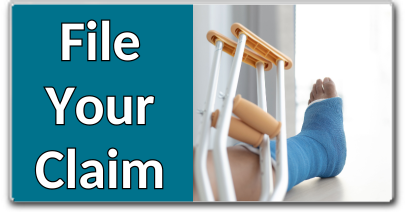Workers Compensation Board of Prince Edward Island
There are thousands of health care workers on PEI, and they play a crucial role in the health and well-being of Islanders. The WCB is committed to making sure health care workers are safe at work.
Health care workers face many hazards in their workplace such as using sharp equipment or needlesticks, dealing with violence in the workplace, and patient handling. Other than these industry-specific hazards, health care workers can face more common ones such as slips, trips and falls, working alone, chemicals, infectious diseases and more.
Workers in medical, dental and other industries who administer needles, draw blood, or use scalpels during patient care, may be at risk of injury if there is loss of control of the sharp object. Needles not stored or disposed properly can also cause injury to an unsuspecting or unprotected worker.
Ideally, needles should have protective caps or other safety features so that workers do not come into contact with the sharp surface, however, if this is not possible, and a worker must work with the equipment, reducing and managing the risk is the next best option.
Learn more about working safely with needle stick and sharp objects:
Learn more about minimizing or eliminating the risk of workplace violence:
Employers must make sure workers follow their safety guidelines to reduce the risk of injury when transferring people.
Before transferring or repositioning a patient, conduct a risk assessment. Based on that assessment, choose the most effective control measure that is most appropriate for the person and the worker. Employers must train workers about the safe use of patient handling equipment.
Learn more about patient handling: Below are additional resources to assist workers and employers in health care:
Legislation: Guides:
Health Care
There are thousands of health care workers on PEI, and they play a crucial role in the health and well-being of Islanders. The WCB is committed to making sure health care workers are safe at work.
Health care workers face many hazards in their workplace such as using sharp equipment or needlesticks, dealing with violence in the workplace, and patient handling. Other than these industry-specific hazards, health care workers can face more common ones such as slips, trips and falls, working alone, chemicals, infectious diseases and more.
Sharps and Needlestick Management
A needlestick injury is a piercing wound caused by a used and potentially infected needle/syringe, or other used sharp such as a scalpel.Workers in medical, dental and other industries who administer needles, draw blood, or use scalpels during patient care, may be at risk of injury if there is loss of control of the sharp object. Needles not stored or disposed properly can also cause injury to an unsuspecting or unprotected worker.
Ideally, needles should have protective caps or other safety features so that workers do not come into contact with the sharp surface, however, if this is not possible, and a worker must work with the equipment, reducing and managing the risk is the next best option.
Learn more about working safely with needle stick and sharp objects:
Violence in the Workplace
The risk of workplace violence exists when there is a direct interaction between workers and clients. It is the duty of all employers to take every reasonable precaution to create a safe workplace for workers. This means that employers in health care must develop procedures for workers to follow to minimize or eliminate the risk of workplace violence.Learn more about minimizing or eliminating the risk of workplace violence:
Patient Handling
Patient handling is the top cause of injury for health care workers. Care workers who move patients are at risk of transfer, lifting and repositioning injuries. Controlling this risk involves providing appropriate mechanical equipment, and training workers on safe work procedures and use of equipment.Employers must make sure workers follow their safety guidelines to reduce the risk of injury when transferring people.
Before transferring or repositioning a patient, conduct a risk assessment. Based on that assessment, choose the most effective control measure that is most appropriate for the person and the worker. Employers must train workers about the safe use of patient handling equipment.
Learn more about patient handling: Below are additional resources to assist workers and employers in health care:
Legislation: Guides:
- Infectious Diseases- OHS App
- Working Alone- OHS App
- Guide to Communicable Disease Prevention
- Guide to the Prevention of Workplace Violence
- Guide to Working Alone Regulations







